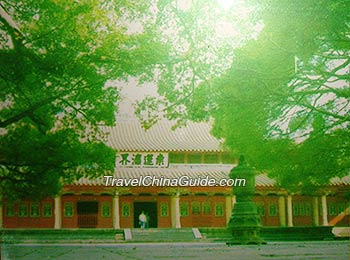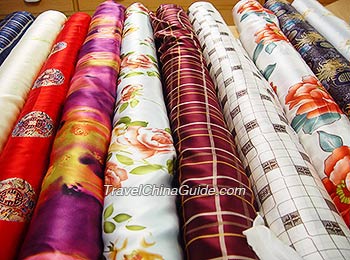Silk Road on the Sea (Maritime Silk Route)
In order to distinguish it from the traditional Silk Road, this maritime trade route linking the East and West was given the name 'Silk Road on the Sea' by a Japanese scholar in 1967. The two most favored courses followed by trade ships were those of the East China and South China Sea Routes.
East China Sea Route
 |
| Kaiyuan Temple in Quanzhou, the starting place of Maritime Silk Road |
When Emperor Qin Shi Huang united China, many Chinese fled to Korea and took with them silkworms and breeding technology. This sped up the development of silk spinning in Korea. These new skills and the technologies were subsequently introduced into Japan during the Han Dynasty. Since the Tang Dynasty, the silks produced by Jiangsu and Zhejiang Provinces were directly shipped to Japan. Many Japanese envoys and monks were also able to travel to Chang'an (now Xi'an) along this sea route.
South China Sea Route
Guangzhou represented the starting-point of the South China Sea Route, which extended across the Indian Ocean and then on to various countries situated around the Persian Gulf. The types goods dispatched for trade consisted mainly of silk, china and tea, while imported merchandise included a variety of spices, flowers and grasses – hence it being commonly referred to as the sea's 'China Road' and the sea's 'Flavor Road' .
The route was first used in the Qin and Han Dynasties, and increased in popularity from the Three Kingdoms Period (220-280) to the Sui Dynasty (581–618). Up until the Tang Dynasty Anshi Rebellions (755–762), this route was viewed as a secondary alternative to the Silk Road, However in the latter half of the eighth century, owing to the scourge of wars in the vast Western Regions, trade volumes along the Maritime Silk Road boomed as those on its overland counterpart steadily declined.
 |
| Delicate Silk |
The Naval Expedition to the West by Zheng He in the early part of the Ming Dynasty demonstrated the great importance of the Silk Road and was to represent the peak of its popularity. The governments of the Ming and Qing Dynasties issued a ban on maritime trade, contributing to massive decline in its use. As the Opium War broke out in 1840, the Silk Road on the Sea totally disappeared.